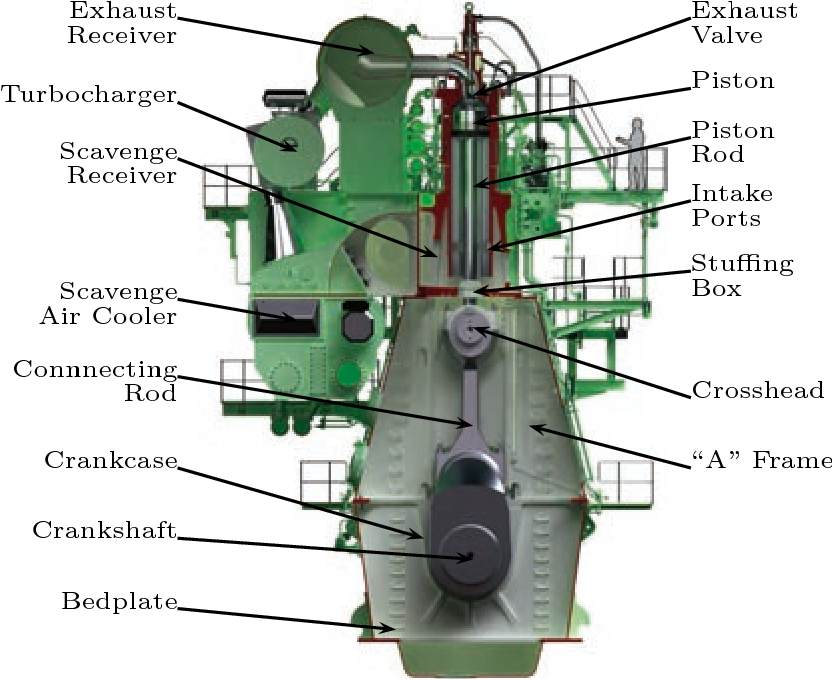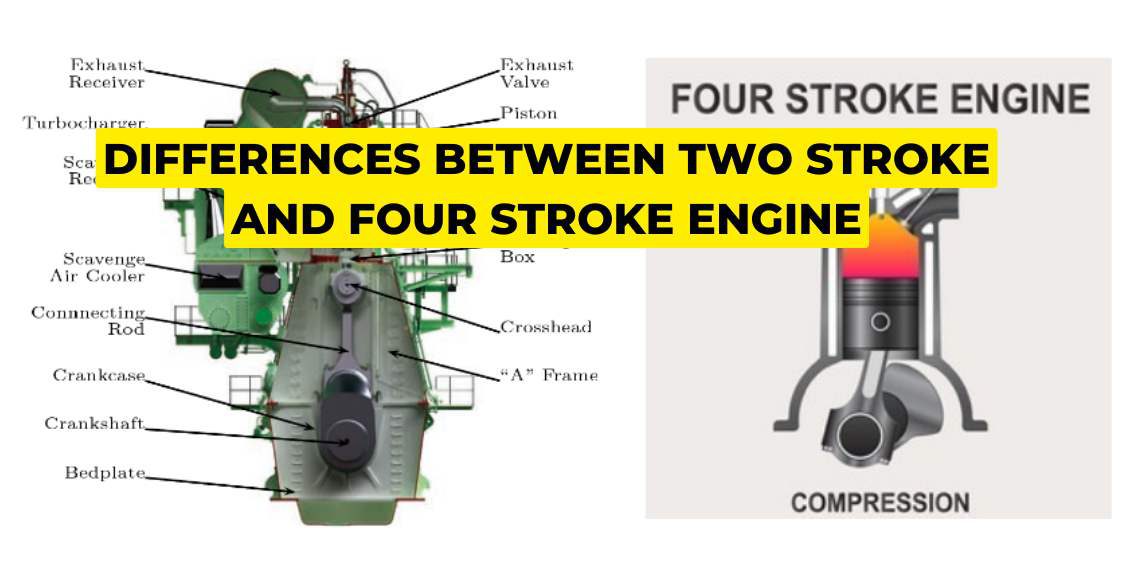Differences between two stroke and four stroke engine
Two-stroke and four-stroke engines are two distinct types of internal combustion engines. Despite sharing the goal of converting fuel into mechanical energy, they differ in their operating cycles and characteristics. In this discussion, we will explore the differences between these engine types, shedding light on their respective designs and working. By the end, you will gain a clear understanding of how these engines vary and their significance in various industries.


Differences between two stroke and four stroke are:
| Two stroke | Four stroke |
| The whole cycle (suction, compression, expansion, exhaust) is completed in 2 strokes of the piston. | The whole cycle (suction, compression, expansion, exhaust) is completed in 4 strokes of the piston. |
| Horse power output (theoretically) of a 2 stroke engine is twice that of 4 stroke but in actual practice it is 1.5 to 1.8 times. | Horse power output is less than that of a 2 stroke engine. |
| Higher pressure and temperature at the starting of a compression stroke, hence thermal stress on the combustion chamber wall. | Lower pressure and temperature as compared to 2 strokes, hence less thermal stresses. |
| Less volumetric efficiency and poor scavenging, hence less efficient. | More volumetric efficiency and better scavenging, hence more efficient. |
| More fuel consumption. | Less fuel consumption. |
| More headroom required. | 4 stroke trunk piston requires less head room. |
| Torque produced is more regular, hence the flywheel is smaller. | Torque produced is irregular and hence heavier flywheel required in comparison with a 2 stroke engine as the number of operating cycles in a 2 stroke engine is twice that in a 4 stroke engine. |
| 2 strokes are used in low speed high powered diesel main propulsion. | 4 strokes are used in medium speed power generation. |
| One power stroke takes place at every revolution of the crankshaft. | One power stroke takes place every two revolutions of the crankshaft. |
| Camshaft to crankshaft ratio is 1:1. | Camshaft to crankshaft ratio is 1:2. |
| 2 stroke low speed engine can burn fuel of cheaper quality because of the very long stroke which adds more time for scavenging and exhaust process. | 4 stroke engine faces trouble in burning cheaper low quality fuel. |
| Lube oil costs less. | Lube oil cost more than 2 stroke engines of equivalent power. |
| Higher power to weight ratio. | Less power to weight ratio. |
Are 2 stroke engines more efficient than 4-stroke engines?
A four-stroke engine is more efficient than a two-stroke engine. Since fuel is consumed once every four strokes in a four stroke engine, fuel is less consumed, as opposed to every two strokes in a two stroke engine.
Note:
If you want to learn more about this topic, we suggest checking out our Combo package with the given link https://www.merchantnavydecoded.com/courses/c/ . It’s a great way to dive deeper into the subject through video explanations. This package covers all the important details and presents them in an easy-to-understand format. Watching the videos will help you grasp the topic better and make learning more enjoyable. So, we highly recommend giving our Combo package a try to enhance your knowledge on the subject.
Disclaimer :- The opinions expressed in this article belong solely to the author and may not necessarily reflect those of Merchant Navy Decoded. We cannot guarantee the accuracy of the information provided and disclaim any responsibility for it. Data and visuals used are sourced from publicly available information and may not be authenticated by any regulatory body. Reviews and comments appearing on our blogs represent the opinions of individuals and do not necessarily reflect the views of Merchant Navy Decoded. We are not responsible for any loss or damage resulting from reliance on these reviews or comments.
Reproduction, copying, sharing, or use of the article or images in any form is strictly prohibited without prior permission from both the author and Merchant Navy Decoded.



